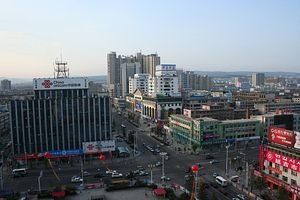For centuries, Koreans lived under the political roof of their suzerain China and drank from the well of its culture. But they didn’t emigrate to the Middle Kingdom in large numbers until the 1800s, initiating a transformation that would take almost 200 years to complete and altering the course of history along the way.
The Korean exodus began with a series of floods, droughts and famines, on top of the levy of severe taxes even upon famine-stricken regions and unused land. This sparked a peasant revolt in 1811, an attempted coup in 1884 (aimed at eliminating yangban, the Confucian one-percenters) and a peasant revolution in 1894. Add to that the Catholic Persecution of 1801, the cholera pandemic of 1859 and the abolition of slavery in 1886, which liberated roughly 40 percent of the population.
All these events triggered the flow of a river of people into China, most of whom settled directly over the border in Yanbian, Jilin Province. From 1881 to 1931, Yanbian’s Korean population mushroomed from 10,000 to nearly 400,000 people. Then in 1932 Jilin became part of the Japanese puppet state Manchukuo, and the heart of the Korean liberation movement. This is where Kim Il-sung cut his teeth battling Japanese troops; he adapted so well that he later had to study up on his Korean before delivering public speeches.
By 1945 there were 1.7 million Koreans in China, 37 percent of them in Yanbian. And though some 600,000 returned home after the liberation of their homeland, a second wave of migration began in 1953, spurred not only by the Korean War but by China’s show of solidarity with North Korea. Mao Zedong embodied this spirit in a speech before the People’s Political Consultative Conference in February 1953, in which he said, “the only course for the Chinese people is to remain determined to go on fighting side by side with the Korean people.”
The number of Korean Chinese rose 72.8 percent from that year until 1990, when Jiang Zemin called Yanbian a “model prefecture.” After generations of unspeakable hardship, it seemed Korean Chinese had finally hit their stride, and in 1995 the government invested in the region with a $30 billion development project known today as the Greater Tumen Initiative (GTI). But as is often the case with multinational megaprojects, getting the GTI off the ground has been a painfully slow process.
Yanbian is no longer the “model prefecture” it once was. Its economy has failed to stir, many locals are destitute, and the prefecture, sitting at the crossroads of China, North Korea and Russia, has become a beehive of illegal activity. Refugees are smuggled out of it to South Korea, women are trafficked into it and sold to farmers or forced into prostitution, and drugs (particularly methamphetamine) flow from North Korea into China through this bottleneck.
From 1990 to 2010 only three ethnic groups in China shrank in number: Tatars, Uzbeks (who won their own homeland in 1991), and Koreans. What caused this? For one thing, female infant mortality rates have been stunningly high in Jilin, even by Chinese standards. More importantly, during these two decades per capita GDP in South Korea rose from $6,642 to $22,151, and many moved there seeking economic opportunity.
Sadly, many newcomers have suffered human rights violations at the hands of their South Korean brothers and sisters, prompting the South Korean Ministry of Justice to announce a crackdown on such behavior, while others have themselves perpetrated violence against their South Korean hosts. Illustrating how little things have changed, the 2013 South Korean film New World features a group of Yanbian Koreans portrayed as uncultured imbeciles.
Of course, Koreans face persecution in China too, as evidenced by the various media and public attacks, both verbal and physical, that have taken place involving football matches in 1999, 2000, 2001, 2002, 2004, 2005 and so on. But here’s the difference: Korean Chinese are considered Chinese by their government, their compatriots, and themselves. As Cui Shengchun, former secretary general of Yanbian’s External Culture Exchange Center, once said, “First, I am a Chinese. I grew up here in Yanbian and I love this place. My mother country is China.”
The recent influence of hallyu (the Korean Wave) has popularized Korean culture in China beyond the borders of Yanbian or the Koreatowns of Shanghai’s Hongqiao or Beijing’s Wangjing. And the reputation of Korean Chinese has been aided by the illustrious accomplishments of China’s ethnically Korean heroes: the cinema star Jin Yan, Zheng Lucheng (composer of the PLA’s anthem), Cui Jian (“the Father of Chinese Rock”), the choreographer Jin Xing, and many others.
Today there are roughly two million ethnic Koreans in China, more than anywhere else outside the Korean Peninsula, making them the 15th largest ethnic group in the nation (out of 56 total). They live mostly in Jilin, where by far the largest administrative division is Yanbian Korean Autonomous Prefecture. There, Korean is an official language and Koreans represent over half the population of Yanbian’s capital, Yanji.
Korean Chinese have made themselves a new home, through no small effort. Yet, as we shall see in Part II, by starting this process they not only changed the face of the nation, but were changed by it themselves, in ways both beautiful and sad.

































